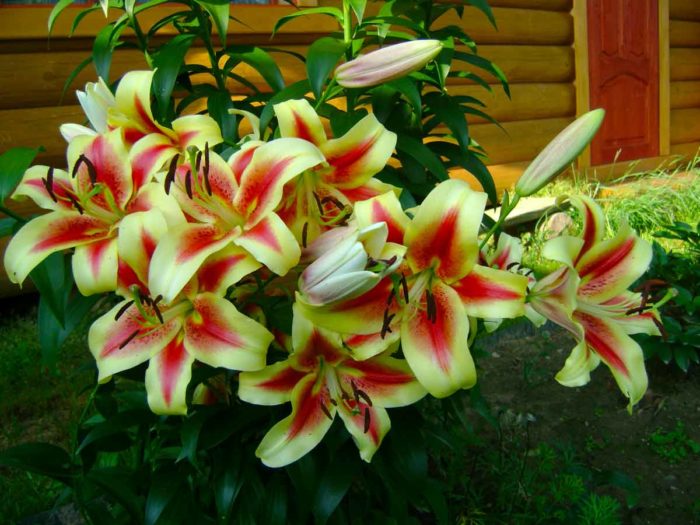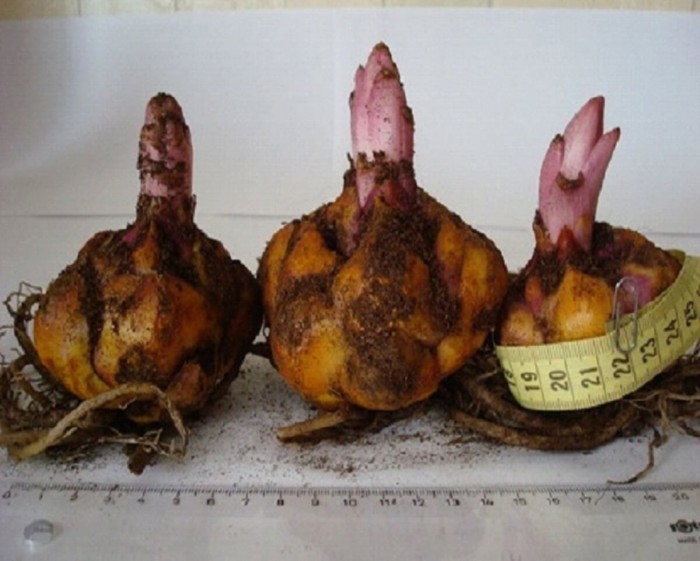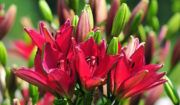How to properly store lilies, from the moment they bloom until planting
Lily brings unsurpassed aesthetic pleasure. However, many gardeners do not risk planting it on their site for fear of the flower’s capriciousness in terms of storage.
But now there is an opportunity to purchase hybrid varieties of lilies. They are more resilient and can easily survive frosts and various diseases. The main thing is to follow all the rules for storing flowers.
Content
Conditions that must be followed when storing lilies during the winter period

First you need to choose the “right” room. It should be well ventilated. Otherwise, the lily bulbs may become moldy, and because of this, fungal diseases may begin to develop. Also, the place intended for storing the bulbs should not be wet. Moisture contributes to the rotting of planting material, and it can germinate prematurely. Too dry room air is also not suitable for winter dormancy of flowers. Under such conditions, the bulbs will begin to wrinkle due to loss of moisture. Optimal temperature conditions are considered to be thermometer readings ranging from 0 to +4 °C.
It is very good, when possible, to place containers with lily bulbs in the basement or cellar. In these rooms it is easiest to follow all the recommendations for caring for flowers.It is important to monitor weather conditions and, for example, during severe frosts, close the ventilation openings and vice versa, or do not open the doors to the room again.
Rules for preparing lily planting material after flowering

With the onset of late autumn, the ovary should be cut off from lilies. This should not be done immediately after the plant has flowered. The foliage and stems should dry out on their own. While this (this period will take about a month and a half) continues, the root system of the lilies will get stronger and gain strength before the next flowering.
When the first frost arrives, the bulbs can be dug up. A dry stem more than 5 cm high should remain above the soil level. It is best to dig with a pitchfork, first making a gap in a circle so as not to damage the root system, then you need to carefully remove the bulb from the soil. After this, they should be freed from a large lump of earth (if there is one), washed in water and left to dry in a shaded place, placing each specimen at a short distance from each other. Experienced gardeners, during this procedure, separate the spaces between the lilies using moss.
Dried flower bulbs, before being sent for storage, must be carefully examined for the presence of diseased, rotten and “wounded” ones during digging. They can be thrown away or stored separately from healthy ones. Then the planting material of the bulbs should be sprinkled with a fungicide (a product that protects against diseases). It is best to store lilies in paper packages; if there are none, you can wrap each bulb in newspaper (wrap it several times), then put it in cardboard boxes with holes. In order to absorb moisture, you need to put moss or dry sawdust on the lilies.
Several options for storing lilies
See the video “How to preserve lily bulbs until spring”:
Sometimes it may happen that the plant germinates ahead of time. Then it must be planted in a flowerpot and sent to a bright and cool room in order to slow down its growth.
Lily bulbs can be stored in plastic bags with small ventilation holes. The bottom of each such package should be covered with a layer (15 cm) of peat, and planting material should be laid out on it. If there are a lot of lilies, then each subsequent ball must be separated with the same peat (10 cm). At the end of this process, the bag must be tied, sent to a cardboard box and taken to a place where the planting material will remain until spring.
It is very convenient to save lilies in peat pots. Then the bulbs can be planted in the soil along with them. Before planting, you need to place the pots in a warm, bright place and start watering the future plant.
Very rarely lilies are left in the ground. But this is very risky. This option is suitable only for those who always have warm winters.






















